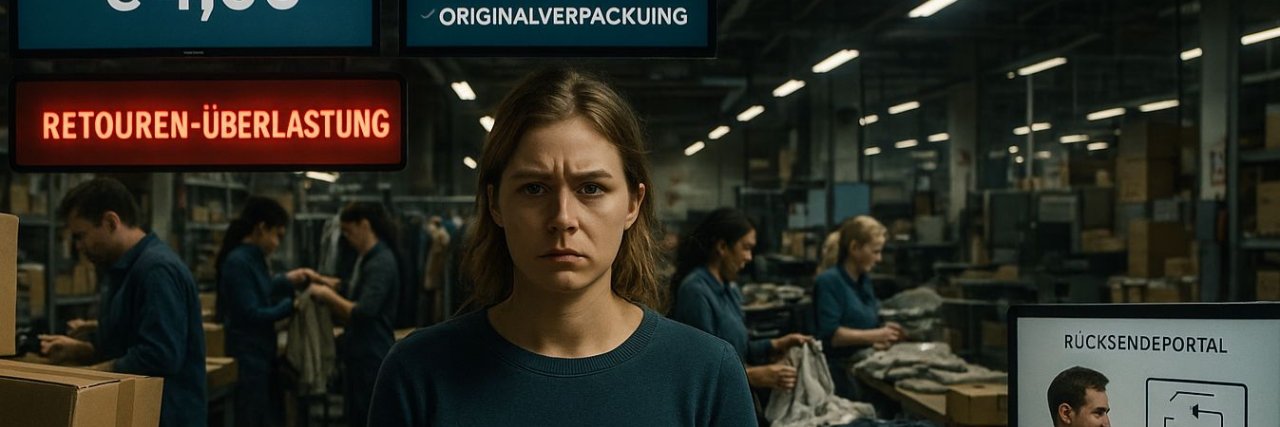Clever returns management: How ASOS and Many Others Are Paving the Way for an End to Free Returns

The fast fashion industry brings the latest fashion trends from the catwalks to our closets at incredible speed through rapid manufacturing processes. Well-known brands such as ASOS, H&M and Zara have had a huge impact on how fashion is consumed today. These companies bring the latest trends to market quickly and at affordable prices, creating high demand. ASOS recently introduced a return fee of 3.95 Euros for customers who frequently return items and who keep goods totalling less than 40 euros. This measure highlights a widespread problem in the fast fashion industry: The rising costs of returns and the massive logistical burden they pose.
ASOS's goal is to avoid “unnecessary” returns through this fee while maintaining the free returns option for other customers. ASOS is thus following a trend that H&M and Zara have also adopted. Nevertheless, the question remains whether this approach can really reduce the high costs and mitigate the negative effects on logistics. At the same time, this strategy could also mean increased sales for online retailers while reducing return rates.
But ASOS is not alone: A recent EHI study shows that delivery times, costs and returns of all kinds continue to pose a challenge for many companies. Many retailers struggle with the cost returns induce, and only 30 percent offer free shipping. Furthermore, only about 40 percent cover shipping costs for orders over a certain value.
Influence customer behavior: More transparency and fairness
Many customers take advantage of the flexibility of free returns to try on goods without paying mind to costs and logistical challenges. The large number of returns is resource intensive, especially for fast-fashion retailers such as ASOS and Zara – from transport and packaging to the reprocessing of returned items. For retailers, introducing return fees can reduce costs and encourage customers to be more conscious about their decisions when ordering. However, this could also annoy consumers who are accustomed to free returns, especially in an industry where fit and size selection are often difficult to gauge.
Therefore, a balance must be found: On the one hand, the fees should cover the costs incurred, but on the other hand, they should not be so high that they are perceived as an obstacle. Transparent return policies and open communication are crucial to building customer trust and positively influencing behavior. Only in this way can retailers strike the right balance between cost efficiency and customer satisfaction.
Workarounds instead of real solutions
There are many reasons as to why a customer comes to the conclusion to return an item, and these may affect many areas within a business where new strategies and solutions may be needed. Often, retailers resort to short-term measures to overcome problems instead of addressing the underlying causes. This often leads to inefficient processes that can have a negative impact on customer satisfaction in the long term. A sustainable strategy for improving the return process is a critical factor in developing efficient solutions that benefit both customers and retailers.
Optimizing the returns process requires innovative approaches. The costs incurred by retailers as a result of returns are clear: Returns have to be transported, stored, checked, and processed, which incurs additional costs and ties up resources – whether in the form of working hours, storage space or other factors. In extreme cases, the return process can even lead to a negative overall result on the balance sheet.
Retailers have to factor these costs into their calculations, putting them at a disadvantage when pricing in a no-cost return model. Many consumers are unaware of this, but these risks and costs are factored into product prices. Overall, it is crucial that retailers take proactive measures to improve their return processes while maintaining a positive customer experience.
A return model with a flat fee may seem attractive to many retailers, but it can be a deterrent for customers. A selective introduction of returns costs, based on specific conditions such as order value or how frequently a customer returns products, could create a better balance between cost efficiency and customer satisfaction. By personalizing returns management, offering different return options based on customer behavior or product category, retailers can better meet the needs of consumers. This would offer customers more flexibility while avoiding unnecessary returns. The more digitally advanced a retailer is in terms of managing returns and product exchanges, the easier it will be to diversify the range of services offered. However, stragglers in the market are not left to their own devices and can benefit from partners who offer tailored solutions to their challenges.
Balancing customer service and efficiency
Customers want convenience; And so far they have associated this with the simplicity offered by free returns, as they have become the norm. But the examples of ASOS, H&M and Zara show that the tides are changing. In view of the increasing costs and challenges in logistics, it is becoming increasingly difficult for retailers to continue offering categorically free returns to consumers. Measures such as the introduction of return fees can help in the short term by reducing unnecessary returns but are not a universal solution. A strategy with long-term success requires better returns processing that relies on automation, flexibility and transparency and implements them with powerful tools.
Retailers need to tailor return options to the needs of their customers while also introducing more efficient logistics processes to reduce costs. A well-structured returns management system that offers customized solutions can not only increase customer satisfaction but also boost profitability. Ultimately, the key lies in a balanced approach that takes into account both retailers' costs and customers' expectations.